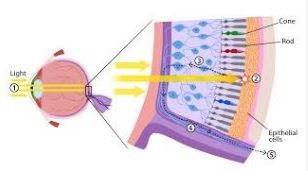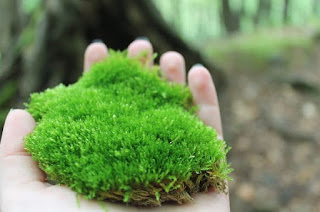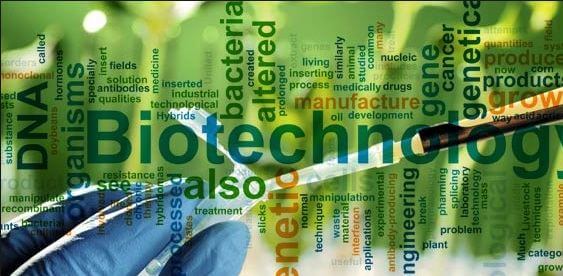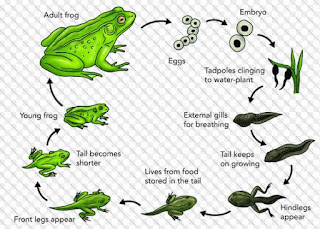Sustainable agriculture systems discuss the objectives, concepts, properties, and examples
In this page, I will present knowledge about Sustainable agriculture. That agriculture has an important role in human life. The availability of staples is a product of agriculture. So we must maintain the availability and sustainability of agriculture.
Agricultural activity is an attempt to meet the needs of human life, especially to meet the growing food needs today. The increasing food needs have resulted in the rapid development in the field of agro-industries and the concept of green revolution caused the man to forget on his concern for the environment.
The increased demand for such food demands high land productivity and has the possibility of damaging existing lands and environments due to the use of synthetic fertilizers and pesticides that are generally used continuously. This has an impact on the decrease in production and productivity of a planted commodity so that land use is not optimal and food needs are not met. Therefore, the world community began to pay attention to the inputs used in agricultural activities that are environmentally friendly but support the production and high productivity.
As time goes by, the attention of the world community towards the environment is increasingly growing. Also did not escape in the field of agriculture involving the sectors of agro-industries in its development.
Along with the development of the world's attention on the environment, then the planning system of sustainable agriculture which is in fact a system of agriculture that return to nature, i.e. farming systems that do not damage, modify, not matching , in harmony and balance with the environment or agriculture that dutifully and is subject to the norms of dust. The concept of sustainable development oriented in the three dimensions of sustainability: the sustainability efforts of economic (profit), the sustainability of the social life of humans (people), natural ecological sustainability.
When done continuously, the system of sustainable agriculture will certainly affect business sustainability, ecology, and sustainability of human life.
In this article will be discussed the following things:
1. What is the history of sustainable agriculture?
2. What is a sustainable agriculture system?
3. What are the goals of sustainable agriculture?
4. How the concept of sustainable agriculture?
5. What is the principle of sustainable agriculture?
6. What characteristic traits – sustainable agriculture?
7. How nature of sustainable agriculture?
8. What are the activities carried out in sustainable agriculture?
9. What examples of sustainable farming systems?
History Of Sustainable Agriculture
The industrial revolution has spawned a variety of modern technology that makes almost any human being could be done more quickly. The development of industrial technology is also venturing into agriculture with the discovery of various inorganic fertilizers, pesticides, and machines for agricultural mechanization. Seen from one point of view and from a time dimension, the discovery of technology in agriculture has been able to increase the productivity of land significantly.
In agro-industries, the increase of agricultural production per unit of time also provides a greater advantage. However, when seen from the side and the other time dimension, the use of modern agricultural technology, which it says has brought negative impact not least level losses thereof. Based on the reasons, then began to appear the concept farm environment.
In 1980, the term sustainable agriculture is used to describe an alternative agricultural system based on resource conservation and quality of life in rural areas. Sustainable farming systems aimed at reducing environmental damage, maintain agricultural productivity, increasing the income of farmers and improve the stability and quality of life in rural communities.
Sustainable agriculture was first used by FAO experts as a synonym of the agroecosystem. The agroecosystem is a modification of a natural ecosystem with human intervention to produce food, fiber, and timber to meet the needs and well-being of mankind. An agroecosystem is defined as an attempt to combine the productivity, stability, and equity.
Definition of Sustainable Agriculture Systems
Sustainable agriculture is the utilization of renewable resources (renewable resources) and resources cannot be updated (unrenewable resources) for agricultural production process by pressing the negative impact on the environment minimal possible. The definition of sustainability includes the use of the resources, the quality, and quantity of production, as well as the environment. The sustainable agricultural production process will further lead to the use of biological products that are friendly to the environment.
Among the specialist soil science or
Agronomy, the term sustainable agriculture systems better known with the term LEISA (Low External Input Sustainable Agriculture) agricultural system that seeks to minimize the use of inputs (seeds, chemical fertilizers, pesticides and fuel) from the outside ecosystems in the long term could compromise the viability of farming systems.
The word sustainable contains two meanings, i.e. maintenance and prolong. This means that sustainable agriculture should be able to care for or maintain for long periods of time.
There are several definitions of sustainable farming systems, among which are:
1. Sustainable Agriculture was a utilization of
renewable resources and resources cannot be updated (unrenewable resources) for agricultural production process by pressing the negative impact on the environment is minimal as possible. The definition of sustainability includes the use of the resources, the quality, and quantity of production, as well as the environment. The sustainable agricultural production process will further lead to the use of biological products that are friendly to the environment.
2. Sustainable agriculture is an agricultural activity that seeks to maximize the social benefits of biological resources management on condition keeping the productivity and efficiency of the production of agricultural commodities, maintain the quality of the environment and resource productivity of all time.
There are a few things to look for in sustainable agriculture, among others, as follows:
1. Biological resources must be utilized or maintained in accordance with ability and natural nature. If a biological resource had to be utilized beyond the limits of its capabilities, the introduction of technology can do for the shortage may compensate for as long as it does not cause any new problems that are more serious.
2. The quality of the environment and natural resources productivity are passed down from one generation to the next must be equal to at least the quality of the environment and natural resources productivity from previous generations.
3. Technology and agricultural management that is applied does not reduce natural diversity (biodiversity).
4. Management of farmer directed at the integrated and multiple uses of natural resources.
5. The farmer does not cause waste or if the waste, waste raises the can still be controlled.
6. The quantity and quality of agricultural commodities produced should be able to meet the needs of a minimum amount of human demand on the rise.
Sustainable agriculture systems can also be interpreted as a success in managing the resource for the benefit of agriculture to meet human needs, as well as maintain and improve environmental quality and resource conservation nature.
While environmentally farm purposes are:
1. Maintain and enhance soil fertility
2. Improve and maintain optimal levels of basil
3. Maintain and enhance biodiversity and ecosystems
4. Maintain and improve the health of the population and other living beings
Means it can be concluded that sustainable agriculture (sustainable agriculture) is the farm that includes the components of physical, biological, social, economic, environmental and human walking is ideally for now and the foreseeable future.
The Goals Of Sustainable Agriculture
In General, sustainable agriculture aims to improve the quality of life. To achieve this need for enhancing economic development activities, prioritize food sufficiency, increasing human resources, removing deprecated maintained the stability of the environment, empower and liberates farmers and focuses the goal of productivity for the long term. To achieve that goal, it takes an approach to sustainable agriculture that is pro-active, based on experience (experiential) and participatory.
Farmers should actively seek out or access other sources of information related to agriculture that is capable of supporting a farmer. For example information on new technologies. Farmers must also be willing to learn from the real experience either through the officers of the field, comparative study or follow the non-formal education on the principals of sustainable agricultural systems that are already successful. This active participation forms the basis of the farmers ' independence in conducting farmer.
The Concept Of Sustainable Agriculture
To developing a system of agriculture, we must put forward the concept of sustainability. Utilization technology of land management and water resource conservation is very important to be applied in a sustainable agricultural system. Because the concept of a sustainable agricultural system depends on the whole progress of the human health and the health of the land.
Currently known a Low External Input Sustainable concept of Agriculture (LEISA) which is a buffer from the concept of integrated farming and sustainable agriculture. This concept proposes the utilization of local resources as raw materials integrated farming patterns, so that will keep the business sustainability of agriculture so that still exist and have the value of the effectiveness, efficiency, and high productivity. In concept, this is noteworthy for two things: the first is utilizing agricultural waste mainly the rest of cultivation into cattle feed and the second is the changing livestock waste into organic fertilizer that can be used back in the process of cultivation plant.
The concept of a merger of the two principles is LEISA namely agro-ecological farming practices and knowledge as well as the local community/traditional. Agro-ecological study of the ecosystem is a holistic farming including all the elements of the environment and human beings. With an understanding of the ecological processes and relationships, agroecosystem can be manipulated in order to increase production in order to produce sustainable, by reducing the negative impact caused to the environment and society as well as minimize external input. This concept has become one of the foundations for sustainable agricultural development.
The Principle Of Sustainable Agriculture
In General, adopt the basic principles of sustainable development, sustainable agricultural systems must satisfy three basic principles as described below.
1. Economic Sustainability.
In order for an activity can continue, a farming must be economically profitable. Sustainable agriculture can boost economic feasibility through many ways. In short, improving the management of land and crop rotations would improve results, in the short term and long term, because it improves the quality of the soil and the availability of water, as it also gives rise to environmental benefits. Economic feasibility can also be achieved by reducing the use of machine equipment, reducing the cost of chemical fertilizers and pesticides (which are mostly farmers can't afford it), depending on the characteristics of production systems.
2. Environmental sustainability.
Sustainable agriculture is often described as ecologically viable activities that are not or little give negative impact on natural ecosystems, or even improve the quality of the environment and natural resources on which farming activities dependent. Usually, it's achieved by means of protecting, recycle, change and/or maintaining a base of natural resources such as land, water, wildlife and biodiversity that contribute to the protection of the natural capital. Synthetic fertilizers can be used to supplement natural input if needed. In sustainable agriculture, the use of chemicals that are known to be harmful to the soil structure, soil organisms and biodiversity are avoided or reduced to a minimum.
3. Social sustainability.
Social sustainability with regard to the quality of life of those who work and live on the farm, as well as the surrounding community. This includes the acceptance or the equivalent income for the different stakeholders in the chain of agricultural production. In the context of high unemployment, sustainable farm promoting value-added agricultural Division for more community members through more use of the available workforce, and will enhance the cohesion and social justice. A decent treatment against workers and opting to buy materials locally rather than buying from a place far away is also an element of social sustainability.
The characteristic traits of sustainable agriculture
1. Economically profitable and be accountable.
Farmers are able to produce profits in production levels are fairly stable, and on the level of risk can be tolerated/accepted.
2. Ecological Insightful
The quality of the agroecosystem is maintained or enhanced, by keeping the ecological balance as well as the conservation of biodiversity. The system of an agricultural ecological system which is environmentally healthy and has high resistance to pressure and interference.
3. Social Justice.
An agricultural system that ensured fairness in access to and control over land, capital, information, and markets, for the involved without discriminating socio-economic status, gender, religion or ethnic group.
4. Humane and appreciate local culture.
Respecting the existence and treat wisely all kinds of beings that exist. In the development of Agriculture did not break away from the context of the local culture and to appreciate the value of the order, spirit and local knowledge.
5. Being able to adapt
Able to adjust itself to ever-changing conditions, such as population growth and the challenge of a new wisdom.
The Nature of Sustainable Agriculture
Sustainable agriculture has five properties, including:
1. Maintaining ecological function
Meaning that it does not damage the ecology of the farm itself.
2. Economically
It means being able to provide a decent value for implementers of the farm it and neither side exploited. Each party gets rights in accordance with the terms of participation.
3. Fair
Any offender implementation agriculture gets his rights without restricted and shackled and not breaking anything else.
4. Humane
Upholding human values, where dignity and human dignity being upheld high including the existing culture.
5. Flexible
Being able to adapt to the situation and current conditions, thereby sustainable agriculture is not static but dynamic can accommodate the wishes of consumers as well as producers.
Sustainable Agriculture Activities
Some of the activities are expected to support and contribute to increasing agricultural productivity gains in the long term, improve the quality of the environment, and to improve the quality of life of rural communities is as follows:
1. Integrated pest control
Integrated pest control is an approach to pest control combined with methods of biological, cultural, physical and chemical, in an effort to minimize; cost, health, and environmental risks. As for how it can be through.
a. Use of insect, reptiles or animals selected for controlling pests or known natural enemies of pests, such as Trichogramma SP., a natural enemy of parasite eggs and larvae of the parasitic plant pests.
b. Use plants-plants "catcher" pests, which serves as a decoy, which is the main crop from pests to distance.
c. Use of drainage and mulching as natural methods to lower the fungal infections, in an effort to decrease the need for synthetic fungicide. Perform crop rotations to cut off the pest population growth each year.
2. A rotational System and Cultivating Grass
Cultivated intensive grass management system new is to provide a place for cattle outside of agricultural areas subject planted high-quality grass, and may indirectly lower the cost of feeding. In addition, the rotation is meant to give time for the maturation of organic fertilizer. The area of the farm combined with grass or orchards can have a double benefit, among others, cattle can produce manure that is fertilizer for agricultural areas.
3. Land Conservation
Some land conservation methods include planting furrows, reduce or not doing the hijacking of land, and the prevention of soil erosion by wind either missing or water erosion. Land conservation activities can include.
a. Creating conservation trails.
b. using a retaining dam erosion.
c. Using trees and shrubs to stabilize the ground.
4. Keep water quality/Wetlands
Conservation and protection of water resources have become an important part of agriculture. Many of the farming activities have been implemented without regard to the quality of water. Usually, the wetlands were instrumental in conducting the screening of nutrients (fertilizer inorganic) and pesticides. As for the measures that are aimed at maintaining the quality of water, among other things:
a. reduce the addition of synthetic chemical compounds into the upper soil layer (topsoil) that can wash up to the face of the groundwater.
b. Using drip irrigation.
c. Use conservation trails along the banks of waterways.
d. do the planting of grass for the cattle to prevent the increase of toxins due to the flow of the wastewater farming in intensive farms.
5. Plant Protectors
The planting of crops such as wheat and clover in the late season harvesting crops of vegetables or cereals can provide some of the benefits include suppressing the growth of weeds, erosion control, and improve soil quality and nutrients.
6. Land and crop Diversification
Cultivation with varieties that have quite a lot in the agricultural land can reduce the extreme conditions of weather, pests and peg plants, and market price. Increased diversification of crops and types of other plants such as trees and herbaceous, can also contribute to the conservation of the habitats of the animals, the land, and increase the population of beneficial insects.
Steps activities conducted; Creating a water supply, which means creating an environment for frogs, birds and other animals that eat insects. Planting different crops to increase income through the year and minimize the influence of failure similar to plant crops only.
7. Management of Plant Nutrition
Management of plant nutrients properly can improve soil conditions and protect the environment of the land. The increased use of the resource of nutrients in agricultural lands, such as manure and legume crops (Leguminosae) as land cover can reduce the costs of inorganic fertilizers must be issued. Some types of organic fertilizer that can be used include:
a. Composting
b. Use of facing
c. Use of Fertilizer Forage (leaves)
d. Addition of nutrients in the soil with fish emulsion and seaweed.
8. Agroforestry
Agroforestry is a system of permanent land use, where annuals or annual plant is grown in rotation with or form a coated headers, so it is very effective to protect the land from the dashes of rainwater. This system will give you an advantage both in economic as well as ecological. Some of the advantages obtained from the land management system agroforestry:
a. sustainable results can be obtained for plants, seasonal and annual plants.
b. be prevented the occurrence of pests in total that is common in a type of plant (monocultures)
c. the diversity of types of plants found in the agroforestry system allows the formation of stratification heading that fills the space are layered in the direction of vertical. The existence of a heading like this stratification structure can protect the land from the dashes of rainwater because the kinetic energy of rainwater through the header layer layers became progressively smaller than the kinetic energy of falling rain.
9. Marketing
Farmers and ranchers recognized that improving marketing is a move to get better profits. As for how that could be developed are, among others:
a. Direct marketing by mail request, farmer's markets, local restaurants, supermarkets, and traditional market stalls.
b. Using business small business local products as raw materials processed foods
Examples Of Sustainable Agricultural Systems 1. Organic Farm-based sustainable agriculture
Agriculture eco-friendly one is by applying organic agriculture. Organic farming is a production management system integrated that avoid the use of artificial fertilizers, pesticides, and genetic engineering, pressing air pollution, soil, and water. On the other hand, organic farming improves health and productivity amongst the flora, fauna and human beings. The use of input outside of agriculture which led to degradation of natural resources cannot be categorized as organic farming. In contrast, farming systems that do not use the input from the outside, but following the rules of organic farming can enter in groups of organic farming, agro-ecosystem although not certified organic.
Environmentally farm management is done through the utilization of natural resources optimally, a sustainable and profitable, so that it can be utilized in a sustainable way for the benefit of the current generation and future generations. The selection of commodities and an area of business that fit is the key to development in the implementation of sustainable agriculture, commodities should be profitable economically and the public has become accustomed to creating them.
A few basic principles that need to be noted are:
a. The utilization of natural resources sustainably in accordance with ability and power support nature,
b. The process of production or activity of farming itself is done in a familiar environment so that it does not cause any negative effects and externalities on the community,
c. Handling and processing, distribution and marketing, as well as the utilization of the product do not pose a problem in the environment (sewage and garbage),
d. The resulting product must be profitable in business, meet consumer preferences and safe consumption.
2. Sustainable agriculture with Agroforestry
Simply agroforestry is an activity combining between crop plants with Woody (trees). Agroforest is one model of sustainable agriculture that is right, in accordance with the circumstances of farmers. The advantages Agroforestry: agroforestry reduce the conversion of natural habitat, agriculture, species enrichment efforts as a source of income and conservation efforts.
According to De Foresta and Michon, agroforestry can be grouped into two systems, i.e. systems of agroforestry simple and complex agroforestry system.
a.
The simple system of Agroforestry.
A simple agroforestry system is a system of farming in which the trees are planted in intercropping with one or more types of annuals. Trees can be planted as a fence surrounding the swath of land for food crops, randomly in a swath of land, or with other patterns such as marching in the array are forming the hallway/fence. These kinds of trees planted is also very diverse, a high economic value could, for example, coconut, rubber, cloves, coffee, cocoa (Brown), Jackfruit, common, Huntersville, teak and mahogany or low economic value such as Leucaena leucocephala. Types of annuals usually revolve around the food crops, namely corn, soybeans, beans, cassava, vegetables or other types of plants.
A simple form of agroforestry the most widely discussed in Java is intercropping. This system is carried out in the area of teak forests in Java and developed in the framework of the social forestry programs of Perhutani. In the land of farmers are allowed to plant annuals in amongst the young teak trees. Annuals result taken by farmers, but farmers are not allowed to cut down or damage trees.
In its development, this simple agroforestry system is also a mixture of several types of trees in the absence of annuals. For example, the coffee is usually inserted with the plant Erythrina Variegata.
b. Agroforestry systems are Complex: Forest and garden
A complex agroforestry system is a system of agriculture settled involving many different types of trees (tree based) intentionally planted and grows naturally on a plot of land and farmer-run following a pattern of cultivation and ecosystem resembling a jungle. Within this system, in addition, there are various types of trees, shrubs, plants also climb, seasonal plants and grasses in large quantities. The primary identifier of the system agroforestry the complex is physical appearance and dynamics in it that is similar to the natural forest ecosystems.
Based on its distance to place of residence, the system agroforestry the complex is distinguished into two, namely, garden or yard tree-based (home garden) and ' agroforest '. The gardens are common in West Java is a system located in the yard near the residence and beginning with planted with annuals for several years (phase gardens).
In the second phase of fruit trees (papaya, banana, etc) planted in intercropping with annuals (mixed garden phase).
In the third phase, some of the original plant's beneficial forest left to grow so that it formed a pattern of the combination of native plants such as bamboo, timber-producing trees with fruit trees. In this phase of the annuals that grow underneath is very limited due to the large shade.
Obstacles to adopt Sustainable farming practices
After having given evidence to suggest that the practice of sustainable agriculture, in fact, creating double benefits, including decreased production costs, environmental benefits, and at the same time can improve production, is very important to understand what that impede poor farmers to adopt this technology.
1. The condition of local agro-climate.
Agroklimat environmental heterogeneity has implications that there is no one approach that can be applied uniformly around the world. Techniques and different systems applied, and adapted, in different agroecology condition, give a different result. For example, in Ethiopia, and less tillage stone gives better results in the area a bit dry (semi-arid) compared to areas with high rainfall.
Biophysical factors such as local or regional soil quality and characteristics of the plot have been found to be an important determining factor for adopting conservation tillage technology. The same technology may not be appropriate for all family farmers because of the difference in resources, or markets that are not perfect or even absent, as well as the lack of credit.
2. Availability of biomass.
The adoption of sustainable farming practices by poor farmers are dependent on the number and availability of biomass (e.g. remains of plants, animal waste). This is because most sustainable farming practices (such as erosion control, water conservation, improvement of soil fertility, carbon binding) dealing directly with the biomass used to improve soil quality. The quantity of biomass available for small farmers is generally not sufficient because poor farmers have limited resources (such as land, livestock and/or labor).
Some studies have found evidence that livestock ownership affects the adoption application of compost, while the total land owned and labor limit the adoption of conservation tillage. The adoption of techniques such as the use of cover crops and the remains of plants (mulch) in the Ethiopian Highlands depend on the size of agricultural land and the availability of manpower. So, even though poor farmers are aware of the occurrence of soil degradation and the environment caused by disuse biomass to improve soil quality, they may still choose to divert scarce biomass it for use as a fuel for cooking or as a livestock food because they have no other alternative.
3. Economic Incentives.
Economic incentives are also very important in determining the economic feasibility of sustainable agriculture. The level of profits (in the short term and long term) of sustainable agriculture practices will affect its spread widely. Adoption and economic income of a technology is a function of or influenced by factors such as prices, consumer demand for certain types of food, physical infrastructure, market access, agro-ecology and the characteristics of the House the ladder (as opposed to poor and rich families male head of a household of women opponents). Also important, the level of profit of a certain practice is dependent on the agro-ecological conditions.
The rising prices of inputs will encourage the adoption of sustainable agricultural practices because farmers will replace external inputs with the practice often more use of manpower and resources that are available locally.
4. Product Market.
Demand has also become an impetus for the adoption of the technology. Increased knowledge and improved lines of communication will direct consumers to increase his request will be food products produced organically in the developed countries. At the same time, consumers are increasingly asking for food products that are manufactured using techniques of natural resource conservation, reducing pressure on the environment and pay attention to rural areas and eligibility for welfare animals.
This could be an opportunity to adopt sustainable agricultural practices for developed countries. Farmers in developing countries are not integrated with the input and output markets. This affected the promotion and adoption of this technology. Studies in Ethiopia, Kenya and the Dominican Republic found that infrastructure and better market access had a positive impact on the adoption of sustainable farming practices including technology. The investment costs are paid in advance and transaction costs in learning in developed or adapted an old technology have also become obstacles in adopting these technologies, especially in developing countries where capital markets are not perfect.
5. Access To Information.
Access to information is also important in raises awareness and attitude towards adoption of the technology. The insufficiency of information on the availability, the benefits of adoption, and detailed technical implementation of sustainable agriculture practices hampered to adopt this technology. In Ethiopia, a recent study found that access to agricultural extension services affect adoption of compost and tilling less (less tillage) positively, while formal education (as opposed to without education at all increasing the possibility of application of compost). Lack of awareness of the magnitude of the problem of soil erosion as well as lack of knowledge about the technology of conservation is also identified as the two main barriers farmers in adopting soil and water conservation technology in Tanzania.
6. Mastery of the land.
The insecurity of the mastery of land (land tenure insecurity) has proven to be obstacles for any investment where the reception is Dinobot with (will be received in the) future, when extra cash now when needed. This applies to all technologies including the adoption of sustainable agriculture practices. Nevertheless, the impact of insecurity of land investment in the mastery of sustainable practices has found specific locations or countries. In the Philippines and Honduras, insecurity mastery positively and significantly influenced the adoption of the "hedgerow" (hedgerows living among the plants that remain unanswered) and minimum tillage (minimum tillage). However, a study conducted in Uganda and southern Ethiopia where the scarcity of resources is common found that land is not mastery of insecurity significantly hinder investment in the land.
7. Institutional.
Institutional is also an important aspect in facilitating the promotion and adoption of sustainable farming practices. Applied research, extension services, NGOs, and networks can become a bridge for the development, implementation, and adaptation of illegal practices such as this. Participatory approaches which consider the capital of a society (social capital) in the implementation of the technology have been identified to be one of the important factors in influencing the adoption of sustainable farming practices.
The lack of a decent extension service has been identified as a barrier to the adoption of technology to increase productivity and is considered one of the disadvantages of the system of delivery in the extension. To ensure that the information is accurate and up to date have been delivered by the extension officers, required the development of training systems and organizations that continually improve the competency of the extension officers, especially regarding farming practices, not conventional such as sustainable agriculture.
With limited government resources and financial pressures experienced by the institutional outreach, it is important to foster public awareness of the farmers with coaching some farmers elected.
An informal network among farmers has always been a strong channel for mutual exchange of information and disseminate knowledge. For example, in Cambodia, the user SIP has grown almost 4000 times in 2008 compared to the year 2000, mainly through the dissemination of information informally. An evaluation that is performed against the 120 farmers who use the SIP method for at least 3 years found that, overall, they have given information on 969 households in his village, and 967 households outside her village.
However, despite the diffusion of such information very give hope, this can not be a substitute for the purposes of existence trained extension officers. They are still required to provide information that can be trusted about these practices, and therefore will ensure sustainability. Most farmers in developing countries are outside the economic system of ' cash ' with risk and high transaction costs.
This means that the existing institutional countryside becomes very important to reach this kind of farmers, provide them with information, credit and marketing services. Group or Association of farmers can be a valuable source of information for farmers. In the northern part of Ethiopia, a household membership in at least a group of farmers to significantly increase the likelihood of implementing conservation tillage and/or compost on their farmland. Also in Ethiopia, the waiter the credit associated with the technical assistance of microfinance institutions increase the use of compost and the investment in processing plant land, timber, and fence for life.
8. The political Constraints.
On a national and international level, environmental policies may be rather conducive to the promulgation of sustainable agriculture practices. At first, the factors that influence the design of the agricultural policy is the level of awareness of decision makers of the benefits of sustainable farming practices, such as representing a significant change from the accepted paradigm before. In addition, sustainable agriculture by reducing external inputs such as fertilizers and other chemicals to control weeds and pests may be facing the challenge of an industry of agro-chemicals and other traditional actors in the supply chain input-intensive farming. In order to successfully improve the wide application of sustainable agriculture required political support at different levels from the local to the national.
SUMMARY
Sustainable farming systems based on the use of agricultural technology. Sustainable farming systems aimed at reducing environmental damage, maintain agricultural productivity, increasing the income of farmers and improve the stability and quality of life of the community.
Of the various notions of sustainable farming systems, can be drawn the conclusion that the system of sustainable agriculture is an agricultural system that proposes the granting of the input is minimal as possible by paying attention to the environment in order to keep the sustainability of the agricultural system of long-term or sustainable. Another term that is more commonly known is LEISA (Low External Input Sustainable Agriculture).
As for the concept of LEISA is a concept which is a merger of the two principles namely agro-ecological farming practices and knowledge as well as the local community/traditional. According to the 2009 year Sihotang, sustainable farming systems should be evaluated based on the consideration of several criteria, among others: safe according to the insight environment, economically beneficial, fair according to social, humane considerations against all forms of life, and can be easily adapted.
Some of the activities that can be supported in the implementation of sustainable agriculture systems:
1. Integrated pest control
2. A rotational System and cultivating grass
3. Keep water quality/wetlands
4. Plant protectors
5. Land use and Crop Diversification
6. The nutrition management of plant
7. Marketing.














